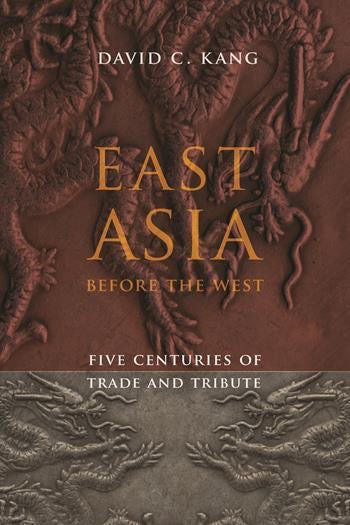During the past decade, the field of astrophysics has progressed at an impressive rate. This was reflected by the topics discussed at the workshop from which this book eminated. These topics include the inflationary universe; the large-scale structure of the universe; the diffuse X-ray background; gravitational lenses, quasars and active galactic nuclei; infrared galaxies; results from infrared astronomical satellites; supernova 1987A; millisecond radio pulsars; quasi-periodic oscillations in the X-ray flux of low-mass X-ray binaries; and gamma-ray bursts.
- Cover
- FRONT MATTER
- INSTABILITIES IN SN1987A AND OTHER SUPERNOVAE
- ON THE EVOLUTION OF PULSARS
- THE SPIN DOWN OF THE RADIO PULSARS BRAKING INDEX
- AXIALLY SYMMETRICAL SUPERNOVA REMNANTS
- NEUTRON STARQUAKE MODEL FOR GAMMA-RAY BURSTS
- THE SHOCK BREAKOUT IN SN1987A MODELLED WITH THE TIME-DEPENDENT RADIATIVE TRANSFER
- MANIFESTATIONS OF DYNAMO DRIVEN LARGE-SCALE MAGNETIC FIELD IN ACCRETION DISKS OF COMPACT OBJECTS
- TURBULIZATION OF SHEAR FLOWS IN ASTROPHYSICS
- REGULAR VARIABILITY OF THE SHAPE OF THE PRIMARY MINIMUM OF THE ORBITAL LIGHT CURVE OF SS 433 WITH THE PHASE OF THE PRECESSIONAL PERIOD
- CHAOTIC INFLATIONARY UNIVERSE AND THE ANISOTROPY OF THE LARGE-SCALE STRUCTURE
- THE CYCLOTRON ABSORPTION LINE AND ECLIPSE TRANSITION PHENOMENA OF 4U 1538-52
- RADIO TELESCOPES AS THE DETECTORS OF SUPER HIGH-ENERGY NEUTRIONS
- OPTICAL OBSERVATIONS OF ACTIVE GALACTIC NUCLEI
- ON TWO-DIMENSIONAL RELATIVISTIC STELLAR WINDS
- CLUSTER RESEARCH WITH X-RAY OBSERVATIONS
- OBSERVATIONS OS X-RAY PULSARS FROM THE KVANT MODULE
- GENERATION OF ULTRAHIGH-ENERGY GAMMA-RAYS IN ACCRETING X-RAY PULSARS
- CAN A MAN-MADE UNIVERSE BE ACHIEVED BY QUANTUM TUNNELING WITHOUT AN INITIAL SINGULARITY?
- ON THE ORIGIN OF THE DIFFUSE X-RAY BACKGROUND
- GRAVITATIONAL LENSES: THE CURRENT SAMPLE, RECENT RESULTS, AND CONTINUING SEARCHES
- COSMIC GAMMA-RAY BURSTS
- GEORGIAN SPACE RESEARCH PROGRAM
- ON THE NATURE OF PULSAR RADIATION
- OBSERVING SN 1987A WITH THE INTERNATIONAL ULTRAVIOLET EXPLORER
- QUASI-PERIODIC OSCILLATIONS IN LOW-MASS X-RAY BINARIES
- THE EVOLUTION OF THE GRAVITATIONAL RADIATION FROM STELLAR COMPONENTS OF GALAXIES
- CLOSE BINARY STARS IN GLOBULAR CLUSTERS
- THE LARGE-SCALE SURFACE BRIGHTNESS DISTRIBUTION OF THE X-RAY BACKGROUND
- X-RAY EMISSION FROM ACTIVE GALACTIC NUCLEI
- ON THE OBSERVATIONAL APPEARANCES OF A FREELY PRECESSING NEUTRON STAR IN . . .
- THE PSR 2127+12 AS AN INDICATOR OF A MASSIVE BLACK HOLE IN THE CORE OF GLOBULAR CLUSTER M 15
- THE FORMATION AND EVOLUTION OF DOMAIN WALLS
- A STATISTICAL ANALYSIS OF GAMMA-RAY BURSTS DETECTED BY THE KONUS EXPERIMENT ON VENERA 11 and 12
- EXTRAGALACTIC X-RAY SOURCE COUNTS
- ULTRALUMINOUS INFRARED GALAXIES
- THE PECULIAR VELOCITY FIELD PREDICTED FROM THE DISTRIBUTION OF IRAS GALAXIES
- X-RAY RADIATION FROM SUPERNOVA 1987A. THE RESULTS OF THE KVANT MODULE IN 1987-89
- BASIC PHYSICS AND COSMOLOGY FROM PULSAR TIMING DATA
- GAS FLOW AND GENERATION OF X-RAY EMISSION IN WR+OB BINARIES
- HYDRODYNAMIC STUDY OF SUPERNOVA 1987A: THE PHASE OF A WAVE OF COOLING AND RECOMBINATION
- APPENDIX

